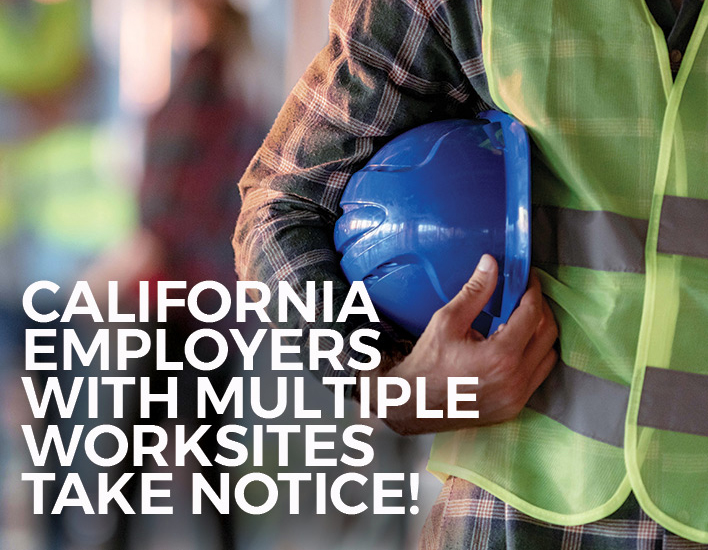By: Chad T. Wishchuk, Esq. of Finch, Thornton & Baird, LLP.
New “enterprise-wide” violations
The new law will presume that an employer with multiple worksites has “enterprise-wide” violations if either of the following is true:
- The employer has a written policy or procedure that violates a Cal/OSHA standard; or
- Cal/OSHA has evidence of “a pattern or practice of the same violation or violations committed by that employer involving more than one of the employer’s worksites.”
An enterprise-wide citation can require enterprise-wide abatement. (See Lab. Code, §§ 6317, subd. (b); 6602.) Penalties for an enterprise-wide violation can reach $124,709 per violation, plus upward adjustments for inflation. This is in line with Cal/OSHA’s authority to penalize between $8,908 and $124,709 for willful or repeat violations. (Lab. Code, § 6429, subd. (a).)
NEW “EGREGIOUS” VIOLATIONS
The law also creates a new classification of violation called an “egregious violation.” An egregious violation is broadly defined to include any circumstance where one or more of the following is true about the employer or its willful violations:
- The employer, intentionally, through conscious, voluntary action or inaction, made no reasonable effort to eliminate the known violation.
- The violations resulted in worker fatalities, a worksite catastrophe, or a large number of injuries or illnesses. For purposes of this paragraph, “catastrophe” means the inpatient hospitalization, regardless of duration, of three or more employees resulting from an injury, illness, or exposure caused by a workplace hazard or condition.
- The violations resulted in persistently high rates of worker injuries or illnesses.
- The employer has an extensive history of prior violations of this part.
- The employer has intentionally disregarded their health and safety responsibilities.
- The employer’s conduct, taken as a whole, amounts to clear bad faith in the performance of their duties under this part.
- The employer has committed a large number of violations so as to undermine significantly the effectiveness of any safety and health program that may be in place.
(Lab. Code, § 6317.8, subd. (b).) Except where noted above in subpart (2), the law contains no clarification. This provides Cal/OSHA with vast enforcement discretion and authority.
A determination of an egregious violation can look back as many as five years from the date of the egregious citation. (Lab. Code, § 6317.8, subd. (c).) Each instance of an employee exposed to an egregious violation will be considered a separate violation for purposes of issuance of penalties. (Lab. Code, § 6317.8, subd. (a).)
new cal/osha subpoena power
The new law provides explicit subpoena power to Cal/OSHA whenever an employer fails to promptly provide requested information. (Lab. Code, § 6317.9.) This adds to Cal/OSHA’s current power of issuing document requests.
EXPANDED CAL/OSHA INJUNCTION POWER
The new law permits Cal/OSHA to apply to a superior court for an injunction whenever Cal/OSHA has grounds to issue an egregious citation. Previously, this power was only in place in the event of a “serious menace” to the lives or safety of employees.
what should an employer do?
The new law went into effect in January 2022. It will heavily impact construction industry employers, big box retailers, and large manufacturers and retailers, as these employers have multiple worksites. Because the new law allows Cal/OSHA to presume that a violation at one location is evidence of a violation at another location, it is important to review all the company’s written safety plans, policies, and programs, especially those that apply to more than one project. Project-specific safety documents that are sourced from a common template should also be reviewed.
For more information
To learn more about SB 606, please contact Chad T. Wishchuk or Marlene C. Nowlin of Finch, Thornton & Baird, LLP at (858) 737-3100.
Download the full article here.
DISCLAIMER: This new law advisory is a publication of Finch, Thornton & Baird, LLP, for the purpose of providing information relating to recent legal developments. It is not intended, nor should it be used, as a substitute for specific legal advice, and it does not create an attorney-client relationship.


